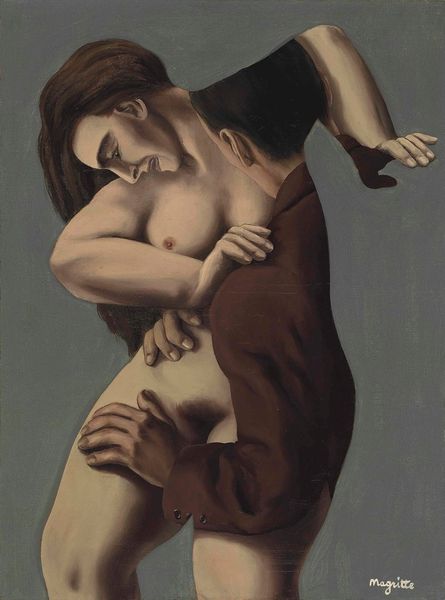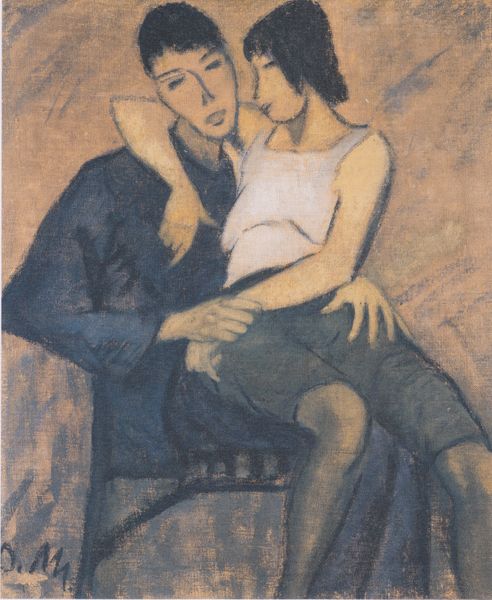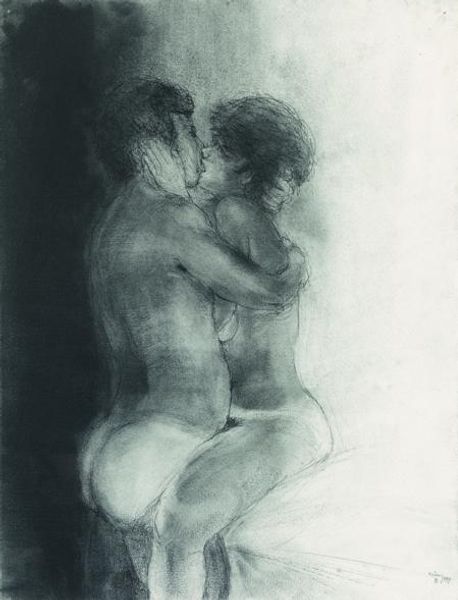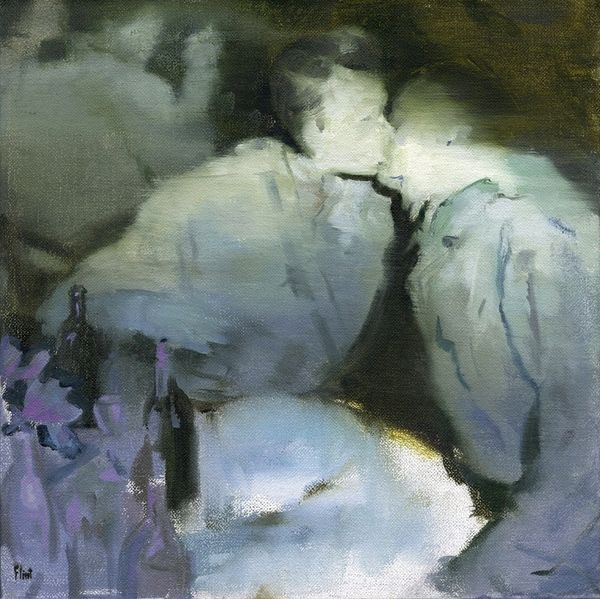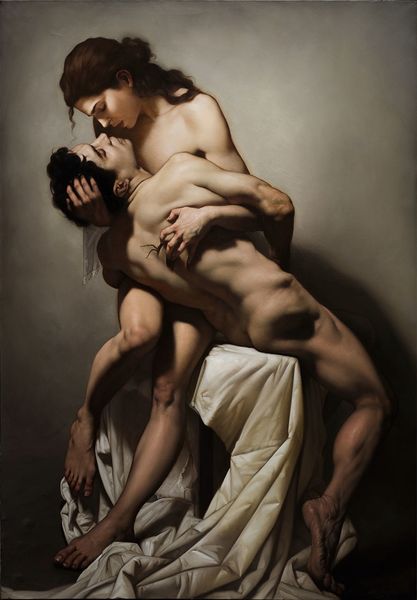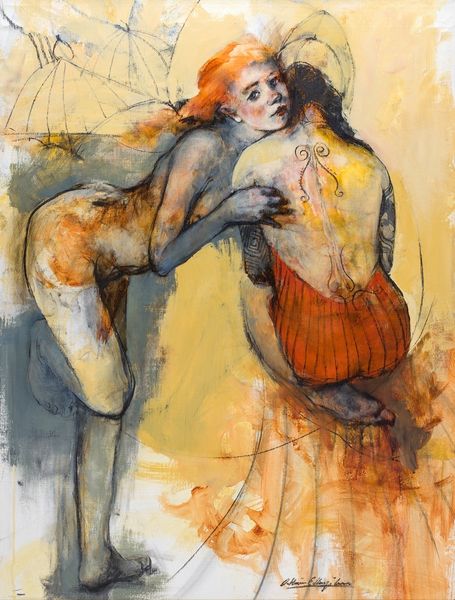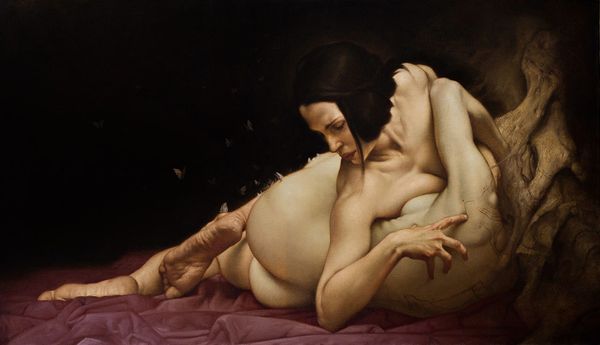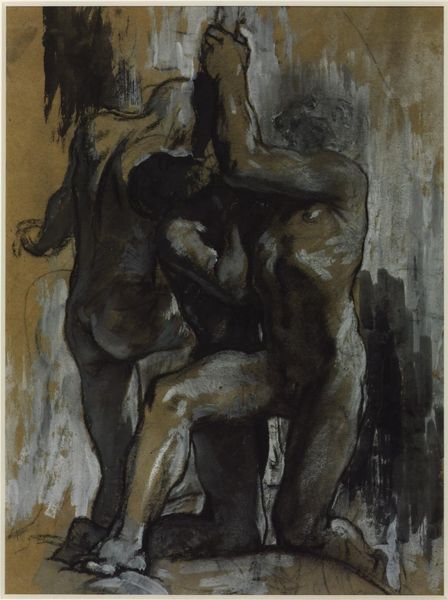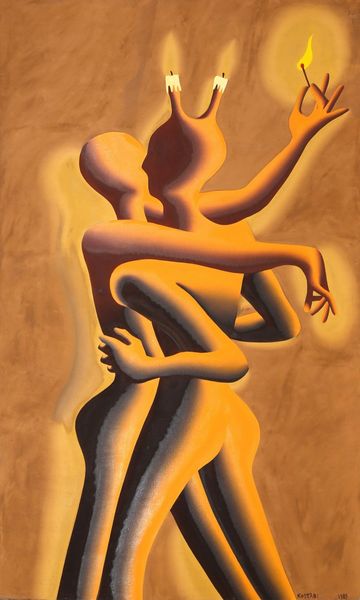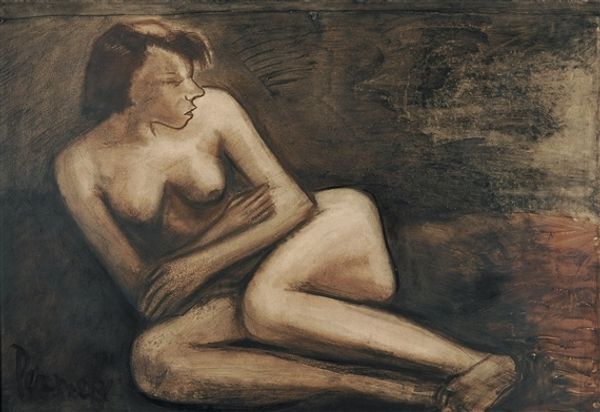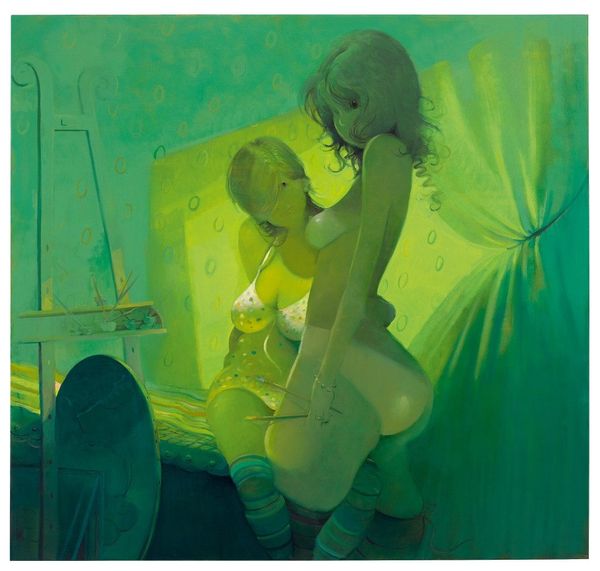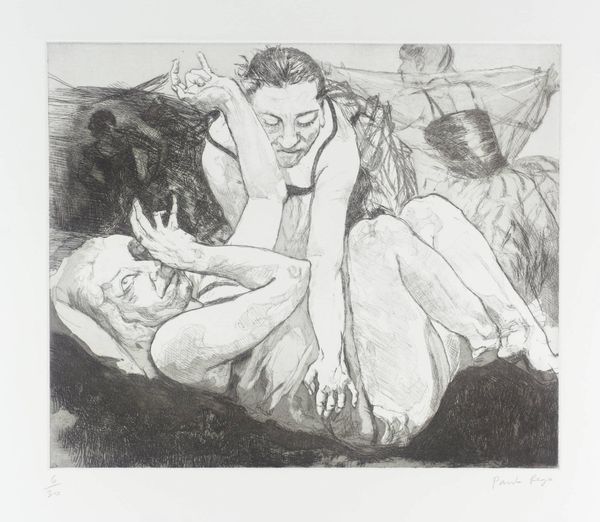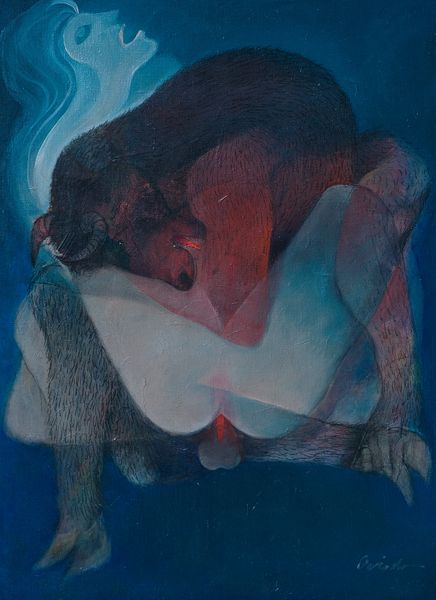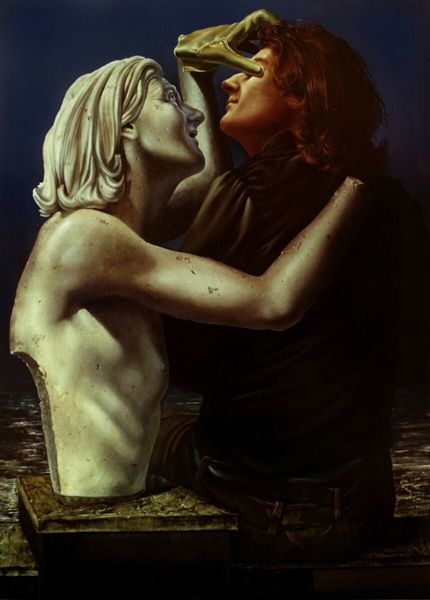
painting, oil-paint
#
portrait
#
narrative-art
#
painting
#
oil-paint
#
figuration
#
romanticism
#
surrealism
#
portrait art
#
erotic-art
Copyright: Modern Artists: Artvee
Curator: Immediately, I’m struck by the stark contrast, the figures almost luminescent against the somber background. There's a sense of drama, wouldn't you agree? Editor: Indeed. We're looking at Léonor Fini's "Le Balcon – la tragédie de Roméo et Juliette," an oil painting which seems to embrace a rather surreal romanticism. The artist is directly referencing the famous Shakespearean scene, although with her own specific visual vocabulary. Curator: Speaking of which, the materiality of oil paint here really emphasizes the bodies. See how the flesh appears almost sculpted? It emphasizes a kind of manufactured idea of love, quite theatrical. Were these works intended for public display, for intimate spaces, or as commissions? How would its consumption change depending on context? Editor: That's a good question. Fini often challenged bourgeois values through her work, which was showcased in galleries and salons, making her critical gaze accessible to the public, sparking conversation about gender roles, and sexuality and love. And to emphasize the figures as constructed and manufactured speaks directly to the function of theaters during the renaissance, as constructed displays of life in an age that largely rejected displays of affect and love. Curator: Right. The darkness surrounding them seems to isolate their connection. I am very intrigued by their androgynous appearances. I wonder if Fini is playing with the concept of gender roles and subverting these binaries to be displayed so publicly? Editor: Fini definitely worked to undermine typical conceptions of femininity. We see here two gender ambiguous figures sharing a charged moment on this very visible "balcon", and note how Romeo has darker skin in comparison to the pale figure of "Juliet". Fini played a significant role in redefining representations of women, reclaiming female agency and challenging patriarchal artistic traditions. Her subversion becomes something new altogether when performed on such a classic theme as this balcony. Curator: It’s powerful how she reimagines such a well-known narrative. The oil paint really sells it as classical in some respects, while the clear distortion marks it as surrealist. Are we meant to be entranced, repulsed, or both? Is that the point? It is definitely working to defy artistic and political convention by placing the feminine and her various forms at its heart. Editor: Fini compels viewers to confront societal norms and expectations. Looking at Fini's position in art history we understand she played an instrumental role in broadening representation of the female experience and artistic expression by allowing viewers to ponder our collective narratives through new artistic lenses and reinterpret societal scripts. Curator: An approach that seems as potent now as it was then. Editor: Precisely. A testament to the enduring relevance of art that challenges the status quo.
Comments
No comments
Be the first to comment and join the conversation on the ultimate creative platform.
